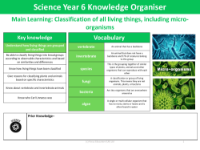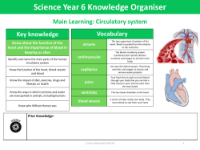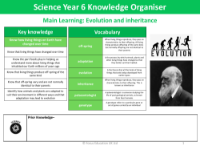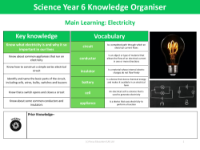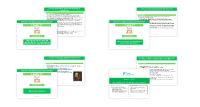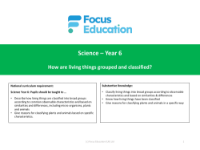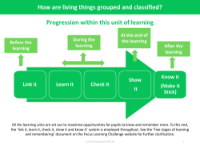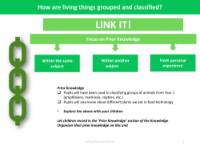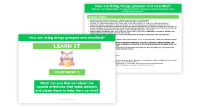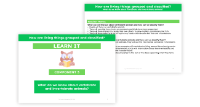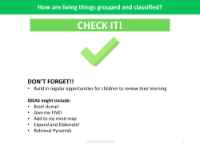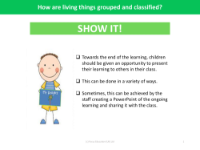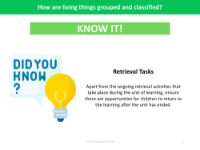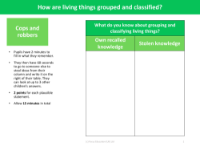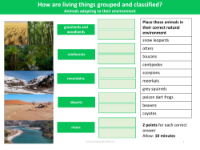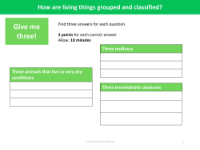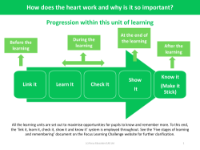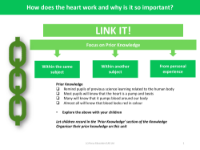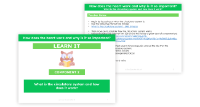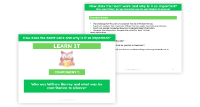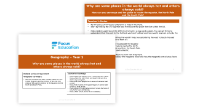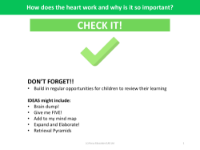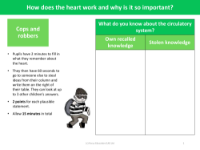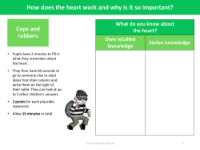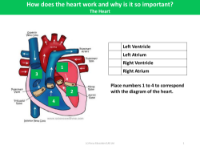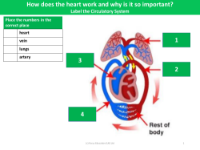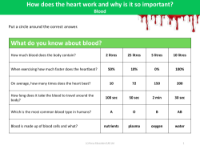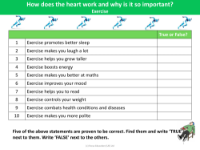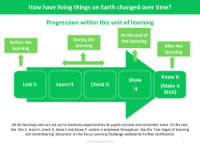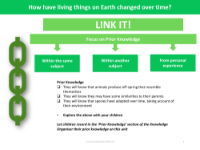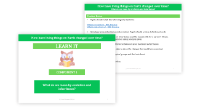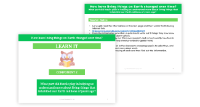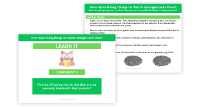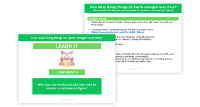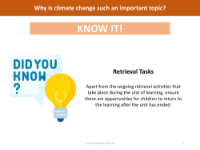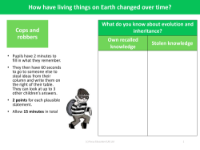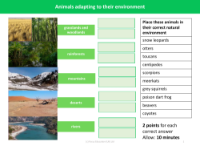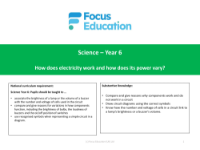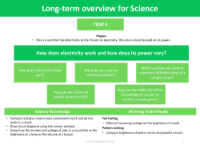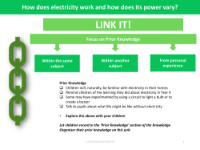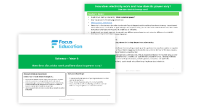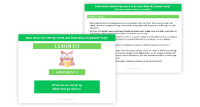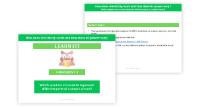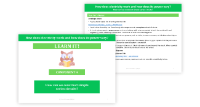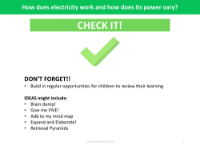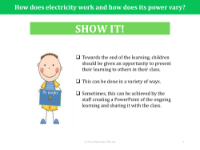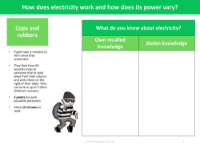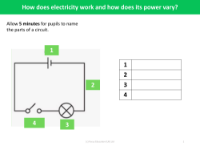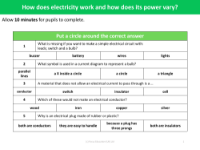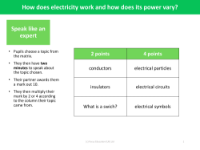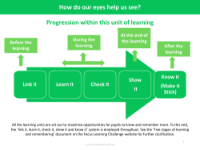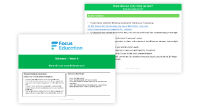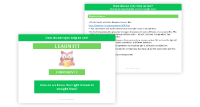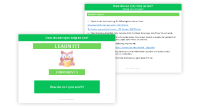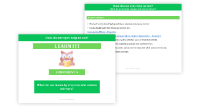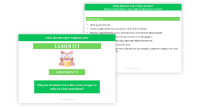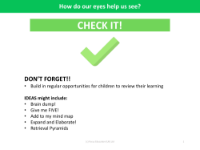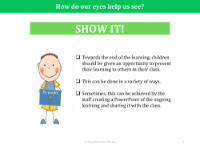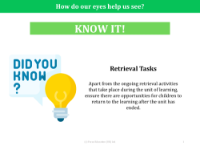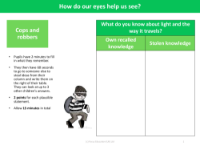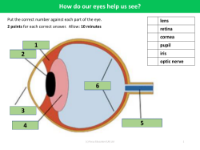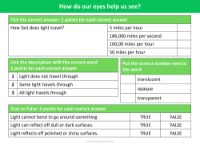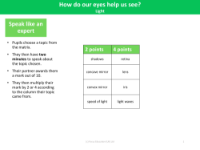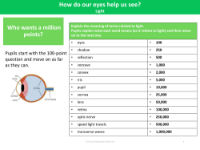Science - Year 6 - Focus Education
What does the Year 6 scheme cover?
Focus Education prioritises equipping teachers with the essential tools to deliver exceptional Science lessons, ensuring remarkable outcomes for pupils. Utilise hands-on observations, experimentation and exploration as integral components of working scientifically through the specific disciplines of biology, chemistry and physics, and foster a lasting appreciation of the structure and behaviour of the biological and physical aspects of the world around us.
Grouping Living Things
What are monera, protista and fungi? Find out this and more during this unit. Learn about bacteria and how some types can be helpful while others cause illness. Find out how the climate can impact plant growth and the amount of water available for animals, and how they often migrate in search of food at certain times of the year. Explore vertebrate and invertebrate animals and use this knowledge to help to classify them.
Key questions answered:
- What do we know about the five kingdoms: animals, plants, monera, protista and fungi?
- What can you find out about the special attributes that some animals and plants have to help them survive?
- What do we know about vertebrate and invertebrate animals?
- Who was Carl Linnaeus?
Heart and The Circulatory System
Explore what the circulatory system is and how it works during this unit. Delve into the three key components: the heart, blood vessels, and blood, understanding the collaborative role each plays in facilitating the flow of blood throughout the system. Explore the specialised functions of the lungs, arteries, capillaries and veins within this circulatory network. Expand your understanding to consider the impact of individual lifestyle choices - such as dietary habits, physical exercise, rest and medication - on the body's overall wellbeing, and gain insights into the effects of legal and illegal drugs, recognising the importance of informed decision-making. Explore the fascinating developments in medical science, including vaccinations, transplants and antibiotics, and appreciate the profound difference they make in healthcare.
Key questions answered:
- What part does the heart play in the human circulatory system?
- What is the circulatory system and how does it work?
- What is the impact of diet, exercise, drugs and lifestyle on health?
- What is the relationship between your heartbeat and exercise?
- Who was William Harvey and what was his contribution to science?
Evolution and Inheritance
Explore who Charles Darwin was, his theory on evolution and how we became the way we are today during this unit. Carry out your own research to find out exactly how fossils are formed, and how they have been preserved through a process called fossilisation. Discuss what we mean by DNA, genes and chromosomes and explore the part DNA has in solving crimes today. Use family photos to explore changes in our own families and understand how living things on Earth have changed and adapted over time.
Key questions answered:
- What do we mean by evolution and inheritance?
- What part did fossils play in helping us understand more about living things that inhabited our Earth millions of years ago?
- How do off-spring vary so that they are not normally identical to their parents?
- Who was Charles Darwin and why does he remain a controversial figure?
- How have animals and plants adapted to suit their environment in different ways and how may that adaptation lead to evolution?
Electricity
Did you know that everything around us is composed of tiny particles? Learn more about how these particles can have either a positive or negative charge and when these charged particles are present or flowing, we call it electricity, during this unit. Look into the different symbols used to represent different parts in a circuit before creating your very own electrical board game with a buzzer, switch, bulb, motor and batteries.
Key questions answered:
- How does electrical energy vary?
- What do we mean by electrical particles?
- Which symbols are used to represent different parts of a simple circuit?
- How can we construct simple series circuits?
- How can we make use of our knowledge of circuits to create a simple game?
Light
Explore how our eyes help us to see and use prior learning about light during this unit. Find out how light travels in the form of transverse waves, similar to ripples in water and how the direction of vibration in these waves is perpendicular to the direction of travel. Also, explore convex and concave mirrors and why a shadow is the same shape as the object that casts it.
Key questions answered:
- How does light travel?
- How do we know that light travels in straight lines?
- How do our eyes work?
- What do we mean by concave and convex mirrors?
- Why do shadows have the same shape as the objects that cast them?
What’s included for Year 6 teachers?
- Full Year 6 National Curriculum coverage
- Detailed lesson plans and presentations
- Visual knowledge organisers for each unit
- Comprehensive assessment materials
- Links to prior and future learning, progression maps & more!
